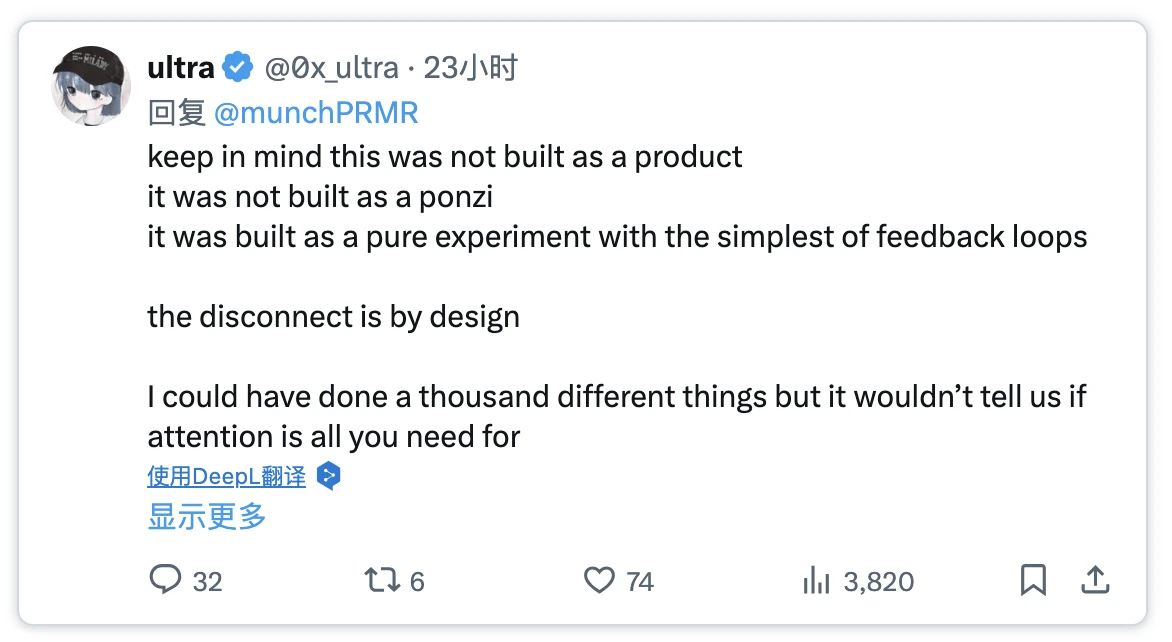Original author: Castle Labs
Compiled by | Odaily Planet Daily ( @OdailyChina )
Translator | Ethan ( @ethanzhang_web3 )
Translators note: In the Web3 world, nothing is more scarce and more realistic than attention - you may not study the white paper carefully, but you will definitely notice the current hot spots in the bombardment of social media.
This article is an open letter to crypto Twitter, and also an experimental memo on decentralized chatterbox economics. It is about new narratives driven by emotions and the emerging paradigm shift in the commercialization of attention.
We should rethink how to evaluate influence in the Web3 world. After all, KOLs, COLs, project owners, creators, and even the general public are all being drawn into the game of discourse power.

With a hint of mystery and a deep dive into “virality,” @0x_ultra has the crypto Twitter community talking about @stayLoudio . As of now, Loudio has captured more than 70% of the “mind share” in English crypto Twitter.
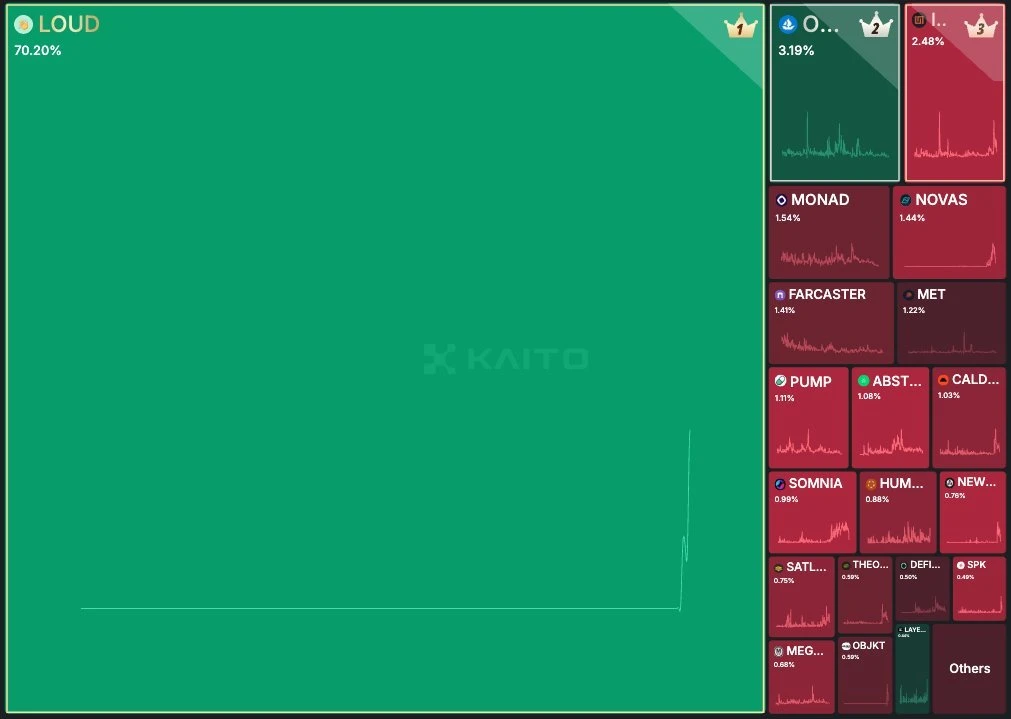
This phenomenon fits neatly into the evolving role of attention and mindshare in today’s storytelling, which I touched on in my article for Kaito .
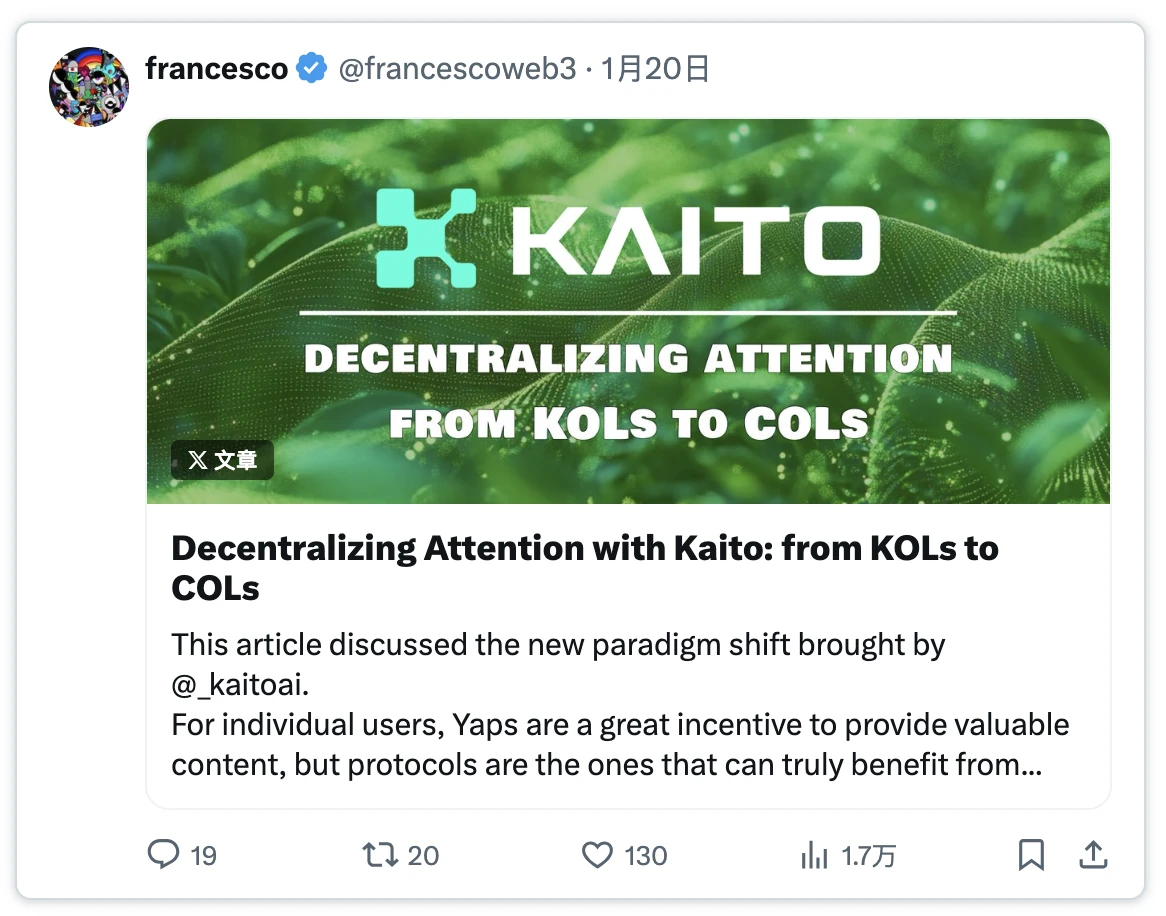
In short, Kaito reshapes the way protocols connect with KOLs to increase brand awareness and expand crypto Twitter distribution capabilities. We all know that the KOL track has long been manipulated: a few big accounts hold the entry ticket for content distribution.
At the same time, many KOLs use robots and fake interactions to brush up data. Projects often spend money but cannot buy real attention.
Kaito effectively decentralizes the attention market, turning “attention” into a quantifiable commodity through a universal reputation system .
This system can also serve as a screening mechanism to rank KOLs by their smart followers and actual contributions. In that article, I predicted that the attention structure would shift from KOLs to COLs.
Through Kaito, the protocol can skip marketing and KOL intermediaries and reward based on community contributions.
Loudio goes a step further and becomes a new experiment in attention and user interaction. It combines the following elements:
@KaitoAI : Attention Economy Model
@Believeapp : A distribution platform that aligns interests with creators
The most attractive thing about this project is that it borrows the “3, 3” mechanism initiated by OlympusDAO, but applies it to the reputation dimension: connecting those who need interaction and content with KOLs and “louders”.
The “3, 3” here should not only be understood in a traditional way, but also means a non-traditional louders collaboration mechanism. In order to continue to lead the leaderboard, they may need to form alliances, create secondary markets, share profits with community members, etc. to achieve collaborative operations.
Loudio is more social than Olympus: you might sell your OHM, but what if your reputation is at stake?
To a KOL, your “value” is your “reputation”.
Loudio extends Kaito further and establishes a new social contract framework where KOLs can monetize their attention by constantly competing for the top position in the leaderboard and thus compete for rewards.
Without going into details, here is the basic architecture diagram of the Louio system:

How does LOUDs flywheel mechanism work?
Each LOUD token exchange will incur a 4% handling fee;
Weekly fees are remitted to the Mindshare Pool in the form of SOL and distributed proportionally among the top 25 contributors;
18% of the transaction fee is distributed to KAITO stakers;
The strict selection threshold for the top 25 is intentional to incentivize loyalty, content quality, and competitive dynamics.
This “gamification” mechanism is crucial : users are incentivized to speak as loudly as possible, vying for the most attention and thereby winning entry into the Mindshare rewards pool.
The LOUD token should not be “overly deconstructed” by crypto analysts on X. As Ultra said, it should be seen as a tool to measure and price attention.
Loudio will officially launch tomorrow on the @HoloworldAI Launchpad.
Teams to watch:
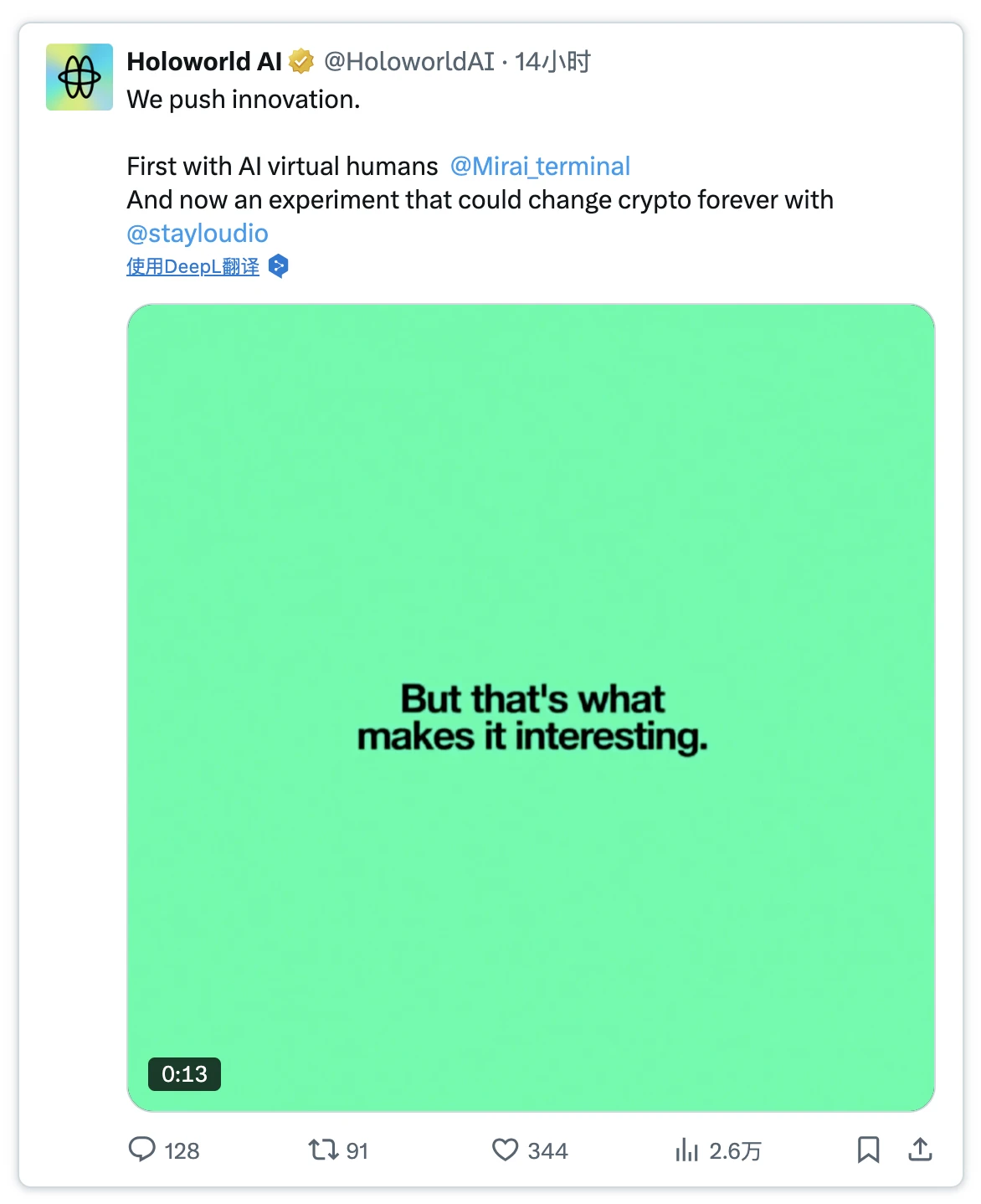
Slayed , one of the core figures of Loudio and also a co-founder:
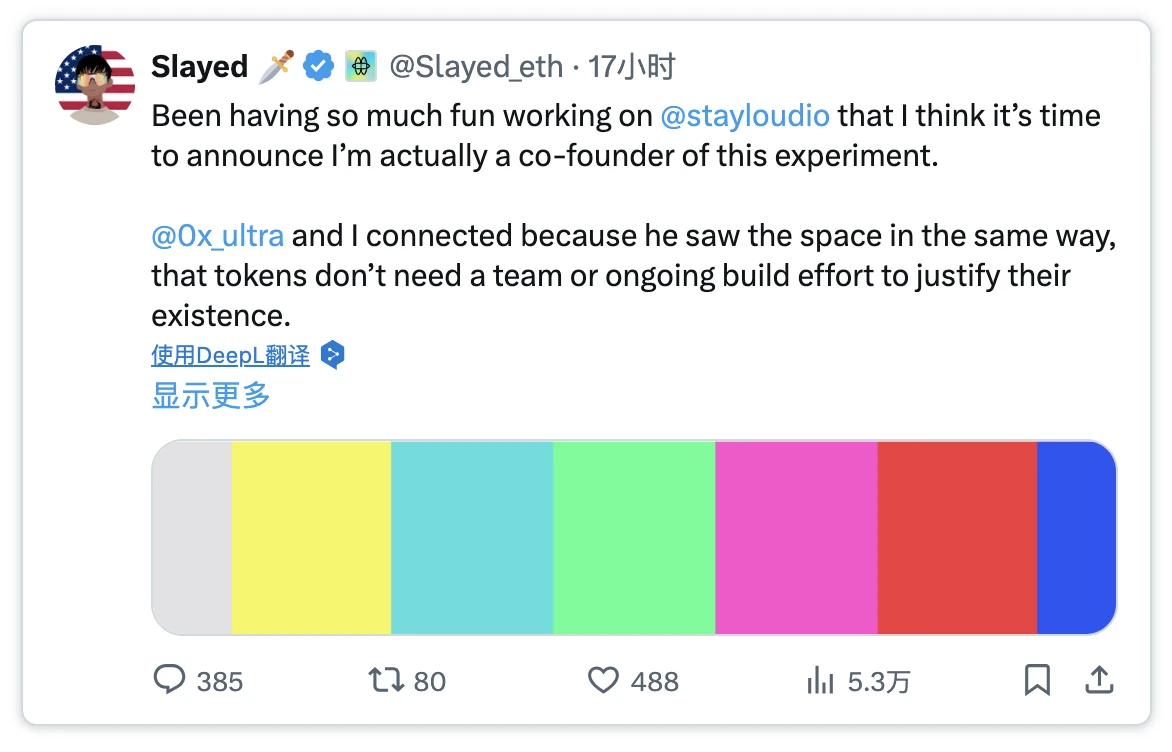
Loudio Players Handbook
Why is Loudio so popular?
It hits the deepest level of human nature : Am I really as cool as I think I am? Can I get into the top 25 by tweeting? This is simply the ultimate narcissism test for KOLs. Its no joke to let the big Vs compete for attention resources themselves. This has contributed greatly to Loudios current level of attention.
Limited information leads to speculation : Not many details were released, and everyone started to speculate wildly. This uncertainty actually stimulated the enthusiasm for discussion. The community trusts Ultra, believes in the narrative, and believes in the binding with Kaito.
The mechanism is extremely simple : not complicated at all. People only need to talk and there is no need to do any operations such as mining or collecting money.
Riding the wave of Kaito : How should the project party use Kaito? It is not yet completely clear, and Loudio is one of the first to try it out, enjoying the early bird bonus, market curiosity and potential value. If it succeeds, Kaito will establish its position as an infrastructure and analysis component, not only for Web3, but also for a wider range of fields.
Kaito is reaping the rewards of success:
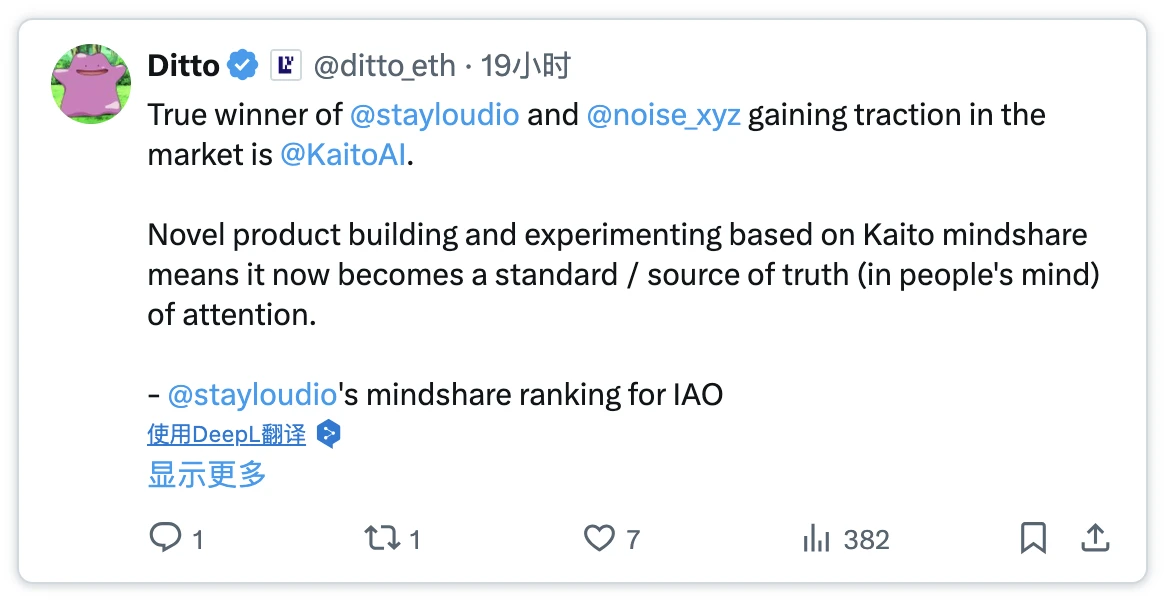
If Loudio succeeds, something like the Initial Attention Offering could become the 2025 version of the ICO. This could be one of the new narratives of the future: ( @beast_ico ’s opinion is brilliant)
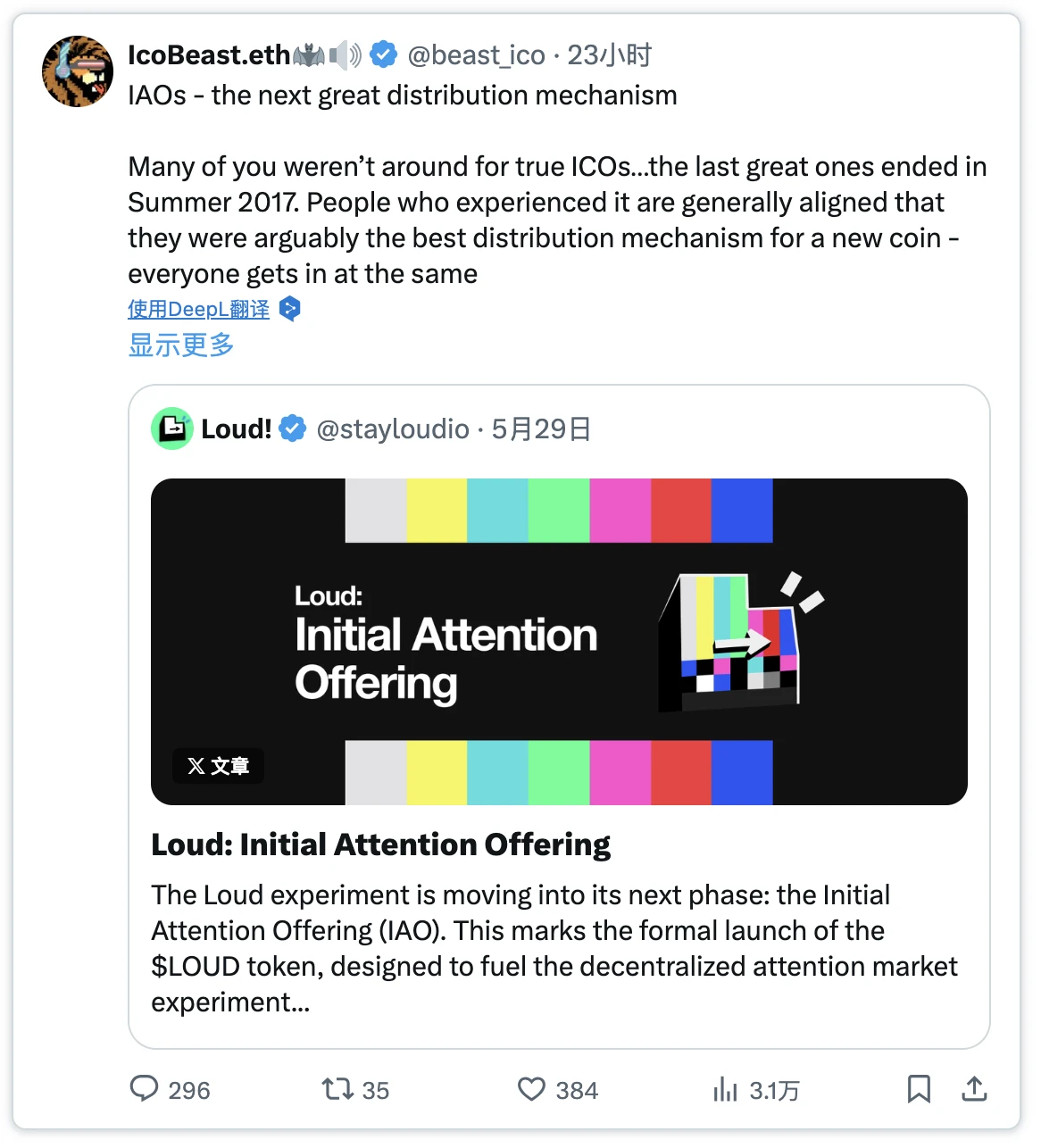
So…will Kaito launch its own IAO Launchpad?
Concerns and reflections
When Kaito and Loudio are fully operational, are our timelines filled with noise? Is it true that whoever pays more can be forwarded and followed?
Kaito reconstructed the attention distribution model, becoming the most efficient per dollar distribution mechanism, accelerating the trend of attention transfer and information flow screen swiping.
But at the same time, dont hate the players, hate the game itself.
Social media has already undergone tremendous changes due to various nested monetization mechanisms, and this path will obviously continue.
However, this will eventually reach an “inflationary tipping point” of attention.
What will social platforms do then?
Will it actively filter out these noises?
Or will thousands of AI accounts further exacerbate the chaos?
These are all worth our deep consideration.
Another concern: Is Loudio unfriendly to small trumpets?

Loudio is essentially an “attention market”. Project owners all want to find top accounts to endorse them.
No one cares about Francescoweb3 s long tweet. They just want @beast_ico and @blknoiz06 are here to speak up.
So do small and medium-sized accounts still have a chance?
The answer is: They may be able to participate in the following ways:
Receive commissions from creators
Receive airdrops from projects
Participate in community-led third-party markets, etc.
Otherwise, it is really unrealistic to rely on them to make it into the top 25 of the rankings.
This is partially mitigated by the IAOs broader participation thresholds.
Summarize
What is Loudios ultimate form? Well have to wait for a while longer.
